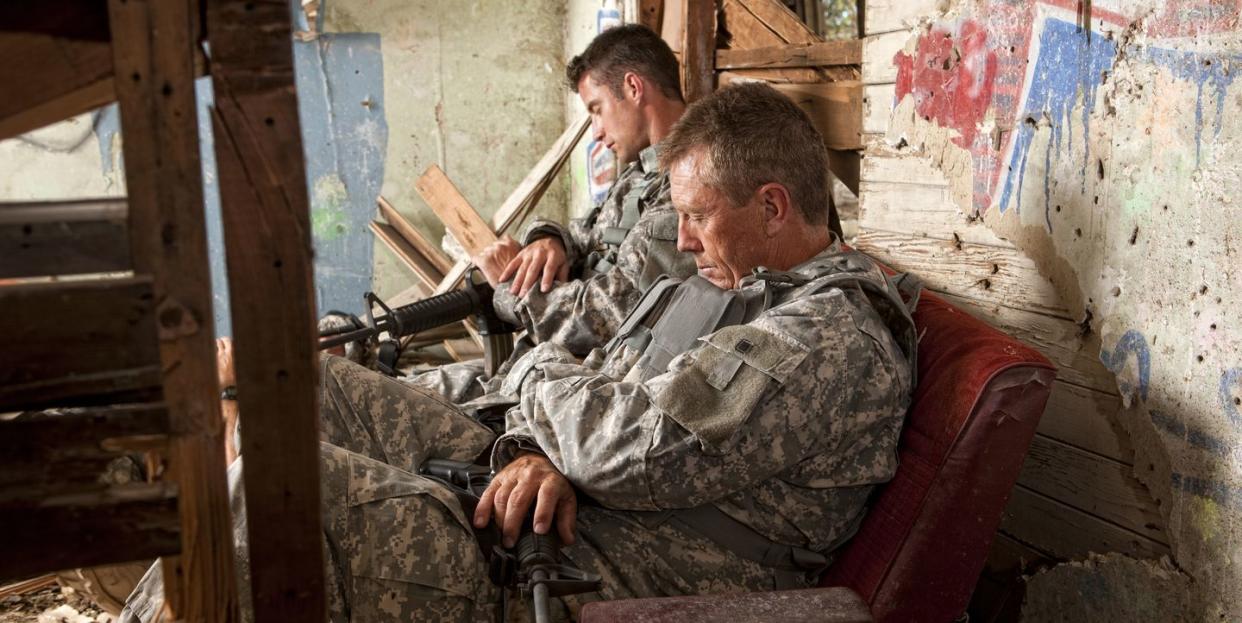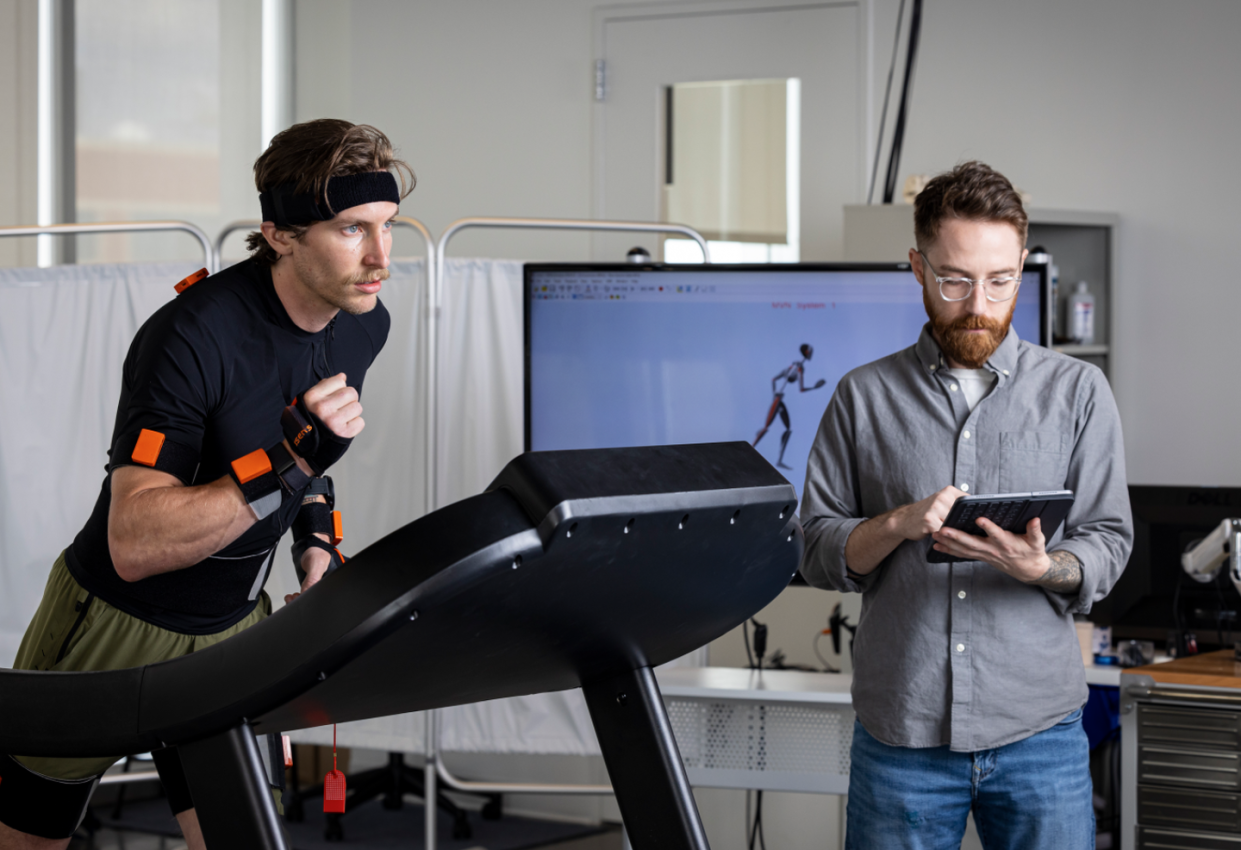Soldiers Don’t Want to Rest. Soon, Computers Will Tell Them When They Need To

Researchers at Johns Hopkins University have developed a machine learning system that could one day report in real time whether soldiers are fatigued and at risk of injury.
Sixty percent of service members report musculoskeletal injuries as a result of muscle overuse in repetitive activities.
In the future, this technology could even prove useful for athletes.
In the U.S. Armed Forces, when people are tired, they keep on working.
“We have a lot of type-A personalities in the military who take it personally to get the job done no matter what the task,” Lt. Colonel Bradley Ritland, deputy chief of the Military Performance Division at the U.S. Army Research Institute of Environmental Medicine, tells Popular Mechanics. “You do have a set percentage who are hesitant to report feeling tired or to report feeling an injury. They think that would impact their career, or feel like they’re letting a colleague down, or feel they wouldn’t be contributing as best they can to the mission.”
Now, machine learning technology from the Johns Hopkins University Applied Physics Laboratory may eventually be able to report in real time whether those soldiers need a break or identify who is at risk for injury. This could help prevent the musculoskeletal injuries that service members routinely experience.
The Physical Demands of Combat
Sixty percent of service members report musculoskeletal injuries, usually as a result of muscle overuse, Ritland says. These can include lower back, spine, knee, and shoulder injuries from repetitive activities. “As an organization, we’re trying to … find ways to reduce those injuries.”
In search of prevention advice, researchers have published hundreds of original studies to identify risk factors for these injuries, according to an overview article in the journal Military Medical Research. The authors found that the main modifiable risk factors are cigarette smoking, high or low body mass index, low Vitamin D, high body fat, low muscular strength, and low physical fitness.
The most demanding physical tasks are the ones related to combat, Ritland says. The specialties with the most challenging demands are the ones where heavy lifting, long marches, and casualty evacuations are required. (A casualty evacuation happens when a service member dies and others are expected to carry their body out of the area.)
Ritland says a combat armed infantry member might conduct a foot march while carrying a rucksack, wearing body armor and a helmet, and carrying loads of equipment, such as weapons, satellites, and/or ammunition. The rucksack might weigh up to 140 pounds, and it could contain additional clothing or food rations. Soldiers may bring supplies for cold, hot, and/or rainy weather.
Predicting Injury Risks

To predict the injury risks in combat environments, an interdisciplinary team is developing a machine learning model that can be used to predict fatigue, says Mike Vignos, a research engineer at Johns Hopkins University Applied Physics Laboratory (JHUAPL). The project requires expertise in physiology, biomechanics, kinesiology, data science, statistics, and electrical engineering.
“We don’t have it set up where we are replicating a specific movement a soldier might do,” Vignos explains. “The protocol right now consists of treadmill-running at two different speeds and two different treadmill inclines, a level treadmill and an inclined treadmill. They’re also performing squats, lunges, burpees, and step-ups. We have them go through a circuit.”
The team is using around 30 sensors to develop this model of movements that induce fatigue. Last year, the results showed muscle-activation metrics were the ones with the strongest correlation to physical fatigue, according to a press release. Additional sensors measuring movement, impact, and heart rate were also helpful.
“We’re not necessarily envisioning that in the future, someone would be wearing 30 sensors,” Vignos says. “Through our analysis, we’re starting to pare down what is that optimal set of sensors. We’re also in the process of investigating [if you] can do this fatigue monitoring completely through just using RGB cameras.”
The team is developing software in Python and Matlab and would like to transition the algorithms to run in real time on something like the programming language C++, Vignos says.
“Right now we are thinking of this as a tool that could be used for situational awareness for the individual soldiers,” Vignos says. “Or being used … for a leader within the military, potentially a commander of a unit … where they could understand how fatigued their team is at any given moment so it could inform their decision-making.”
Athletes could also use these technologies to make decisions about sports participation, Vignos says.
“With research priorities across the military being focused heavily on autonomous systems, whether those are robotic teammates or autonomous decision-making frameworks, leveraging an individual’s fatigue state could be used as a component in decision-making for those autonomous systems as well,” Connor Pyles, assistant section supervisor at JHUAPL, tells Popular Mechanics.
“You could imagine … a human-machine partnership where the machine might be altering its behavior based on how fatigued the human is in order to best assist them,” Pyles says. “Or you could imagine other decision-making frameworks, similar to how a human leader might be deciding how to best leverage the soldiers within a particular unit. You could imagine an autonomous system not making those decisions but providing recommendations on how to leverage soldiers for a particular mission.”
You Might Also Like
